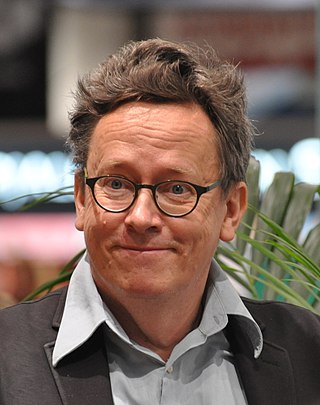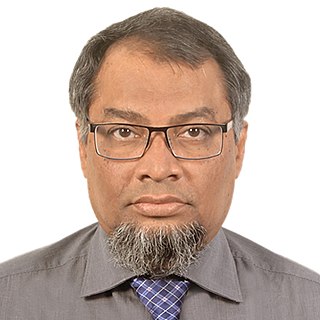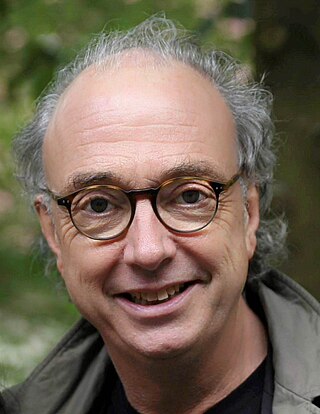Related Research Articles

Helsinki University of Technology was a technical university in Finland. It was located in Otaniemi, Espoo in the metropolitan area of Greater Helsinki. The university was founded in 1849 by Grand Duke of Finland, Emperor Nicholas I and received university status in 1908. It moved from Helsinki to Otaniemi campus area in 1966. The merger of HUT with two other schools created the Aalto University in 2010, and HUT briefly held the name Aalto University School of Science and Technology before being split into four schools in 2011.
Vladimir Naumovich Vapnik is a computer scientist, researcher, and academic. He is one of the main developers of the Vapnik–Chervonenkis theory of statistical learning and the co-inventor of the support-vector machine method and support-vector clustering algorithms.
In computational linguistics and computer science, edit distance is a string metric, i.e. a way of quantifying how dissimilar two strings are to one another, that is measured by counting the minimum number of operations required to transform one string into the other. Edit distances find applications in natural language processing, where automatic spelling correction can determine candidate corrections for a misspelled word by selecting words from a dictionary that have a low distance to the word in question. In bioinformatics, it can be used to quantify the similarity of DNA sequences, which can be viewed as strings of the letters A, C, G and T.

In computer science, a suffix tree is a compressed trie containing all the suffixes of the given text as their keys and positions in the text as their values. Suffix trees allow particularly fast implementations of many important string operations.
In computer science, a suffix array is a sorted array of all suffixes of a string. It is a data structure used in, among others, full-text indices, data-compression algorithms, and the field of bibliometrics.

Teuvo Kalevi Kohonen was a Finnish computer scientist. He was professor emeritus of the Academy of Finland.

Shlomi Dolev is a Rita Altura Trust Chair Professor in Computer Science at Ben-Gurion University of the Negev (BGU) and the head of the BGU Negev Hi-Tech Faculty Startup Accelerator.
In computer science, Ukkonen's algorithm is a linear-time, online algorithm for constructing suffix trees, proposed by Esko Ukkonen in 1995. The algorithm begins with an implicit suffix tree containing the first character of the string. Then it steps through the string, adding successive characters until the tree is complete. This order addition of characters gives Ukkonen's algorithm its "on-line" property. The original algorithm presented by Peter Weiner proceeded backward from the last character to the first one from the shortest to the longest suffix. A simpler algorithm was found by Edward M. McCreight, going from the longest to the shortest suffix.
Kristian Valter Alexander Gullichsen was a Finnish architect. The son of Harry and Maire Gullichsen, he was born into a family of industrialists, designers and artists. His siblings were the renowned Finnish philosopher Lilli Alanen and Johan Gullichsen, a professor of engineering. Kristian Gullichsen had three sons and two daughters, one of the sons was the artist Alvar Gullichsen. Gullichsen was married twice; his second wife was architect Kirsi Gullichsen.

Timo Untamo Honkela was a computer scientist at the University of Helsinki, Aalto University School of Science and Aalto University School of Art, Design and Architecture. He holds a PhD from Helsinki University of Technology.
Erkki Oja is a Finnish computer scientist and Aalto Distinguished Professor in the Department of Information and Computer Science at Aalto University School of Science. He is recognized for developing Oja's rule, which is a model of how neurons in the brain or in artificial neural networks learn over time.
Heikki Olavi Mannila is a Finnish computer scientist, the president of the Academy of Finland.
Petra Mutzel is a German computer scientist, a University Professor of computer science at the University of Bonn. Her research is in the areas of algorithm engineering, graph drawing and combinatorial optimization.

Gad Menahem Landau is an Israeli computer scientist noted for his contributions to combinatorial pattern matching and string algorithms and is the founding department chair of the Computer Science Department at the University of Haifa.
Peter Sanders is a German computer scientist who works as a professor of computer science at the Karlsruhe Institute of Technology. His research concerns the design, analysis, and implementation of algorithms and data structures, and he is particularly known for his research on suffix sorting finding shortest paths in road networks.

Martin Farach-Colton is an American computer scientist, known for his work in streaming algorithms, suffix tree construction, pattern matching in compressed data, cache-oblivious algorithms, and lowest common ancestor data structures. He is the Leonard J. Shustek Professor of Computer Science and chair of the Department of Computer Science and Engineering at New York University. Formerly, we was a Distinguished Professor of computer science at Rutgers University. He co-founded the storage technology startup company Tokutek.
Stefan Szeider is an Austrian computer scientist who works on the areas of algorithms, computational complexity, theoretical computer science, and more specifically on propositional satisfiability, constraint satisfaction problems, and parameterised complexity. He is a full professor at the Faculty of Informatics at the Vienna University of Technology, the head of the Algorithms and Complexity Group, and co-chair of the Vienna Center for Logic and Algorithms (VCLA) of TU Wien.
Maxime Crochemore is a French computer scientist known for his numerous contributions to algorithms on strings. He is currently a professor at King's College London.

Saidur Rahman is a computer scientist, graph theorist, and professor at Bangladesh University of Engineering and Technology.

Johannes Alfred Buchmann is a German computer scientist, mathematician and professor emeritus at the department of computer science of the Technische Universität Darmstadt.
References
- ↑ Ukkonen, E. (1995). "On-line construction of suffix trees". Algorithmica. 14 (3): 249–260. CiteSeerX 10.1.1.10.751 . doi:10.1007/BF01206331. ISSN 0178-4617. S2CID 6027556.
- ↑ Elomaa, Tapio; Mannila, Heikki; Orponen, Pekka (2010). Algorithms and Applications, Essays Dedicated to Esko Ukkonen on the Occasion of His 60th Birthday. Lecture Notes in Computer Science. Vol. 6060. CiteSeerX 10.1.1.697.529 . doi:10.1007/978-3-642-12476-1. ISBN 978-3-642-12475-4. ISSN 0302-9743.
- ↑ "Department of Economics | Aalto University". 13 December 2023.